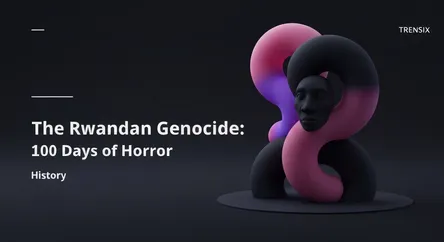History
The Rwandan Genocide: 100 Days of Horror

An overview of the 1994 Rwandan Genocide, a systematic mass slaughter of the Tutsi minority by the Hutu majority over a 100-day period.
What is it?
The Rwandan Genocide was a state-sponsored mass slaughter of the Tutsi minority ethnic group by members of the Hutu majority government. Over the course of about 100 days, from April 7 to mid-July 1994, an estimated 800,000 to one million people were murdered. The genocide was triggered by the assassination of Rwandan President Juvénal Habyarimana on April 6, 1994, when his plane was shot down. Extremist Hutu militias known as the Interahamwe were mobilized, setting up roadblocks and systematically killing Tutsi and moderate Hutu who opposed the violence. The killings were brutal, often carried out with machetes and clubs by ordinary citizens, including neighbors turning against one another.
Why is it trending?
The genocide remains a significant topic in historical and political discourse due to its shocking speed and brutality, and the failure of the international community to intervene. Anniversaries of the event bring renewed attention, fostering discussions on reconciliation, justice, and memory. It serves as a stark case study in the consequences of colonialism, state-sponsored hate propaganda, and global indifference to humanitarian crises. The ongoing process of justice through local "Gacaca" courts and international tribunals, along with Rwanda's remarkable recovery and development, continues to be studied and debated worldwide.
How does it affect people?
The genocide left a devastating legacy, decimating Rwanda's population and social fabric. Survivors live with deep physical and psychological scars, having lost entire families. The event created a massive refugee crisis, with millions fleeing the country. Globally, it prompted a re-evaluation of international peacekeeping responsibilities and the legal definition of genocide, influencing subsequent interventions in other conflicts. For Rwanda, the aftermath has been a long journey of rebuilding national identity, holding perpetrators accountable, and fostering a fragile but determined process of reconciliation between Hutu and Tutsi communities to prevent such atrocities from happening again.